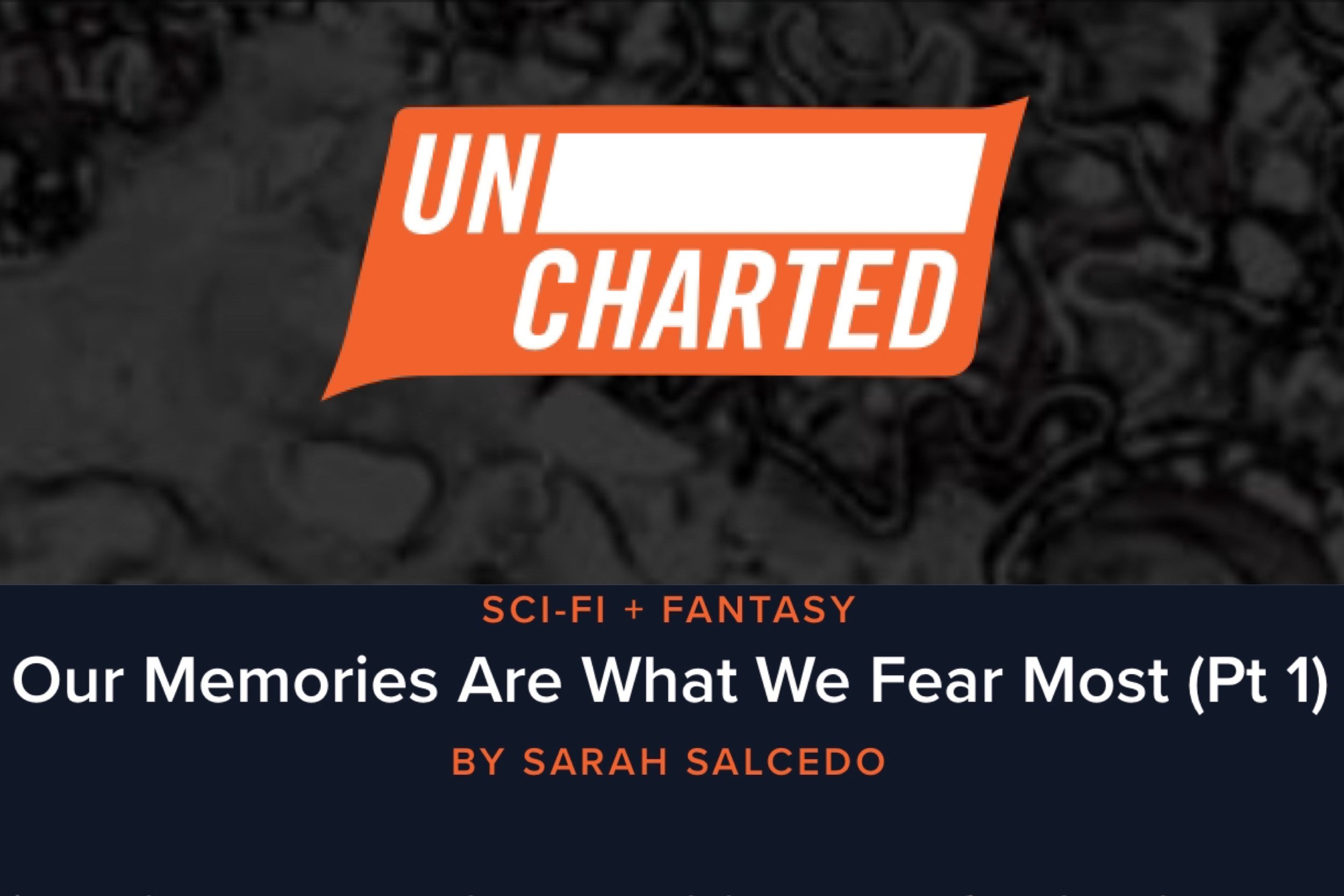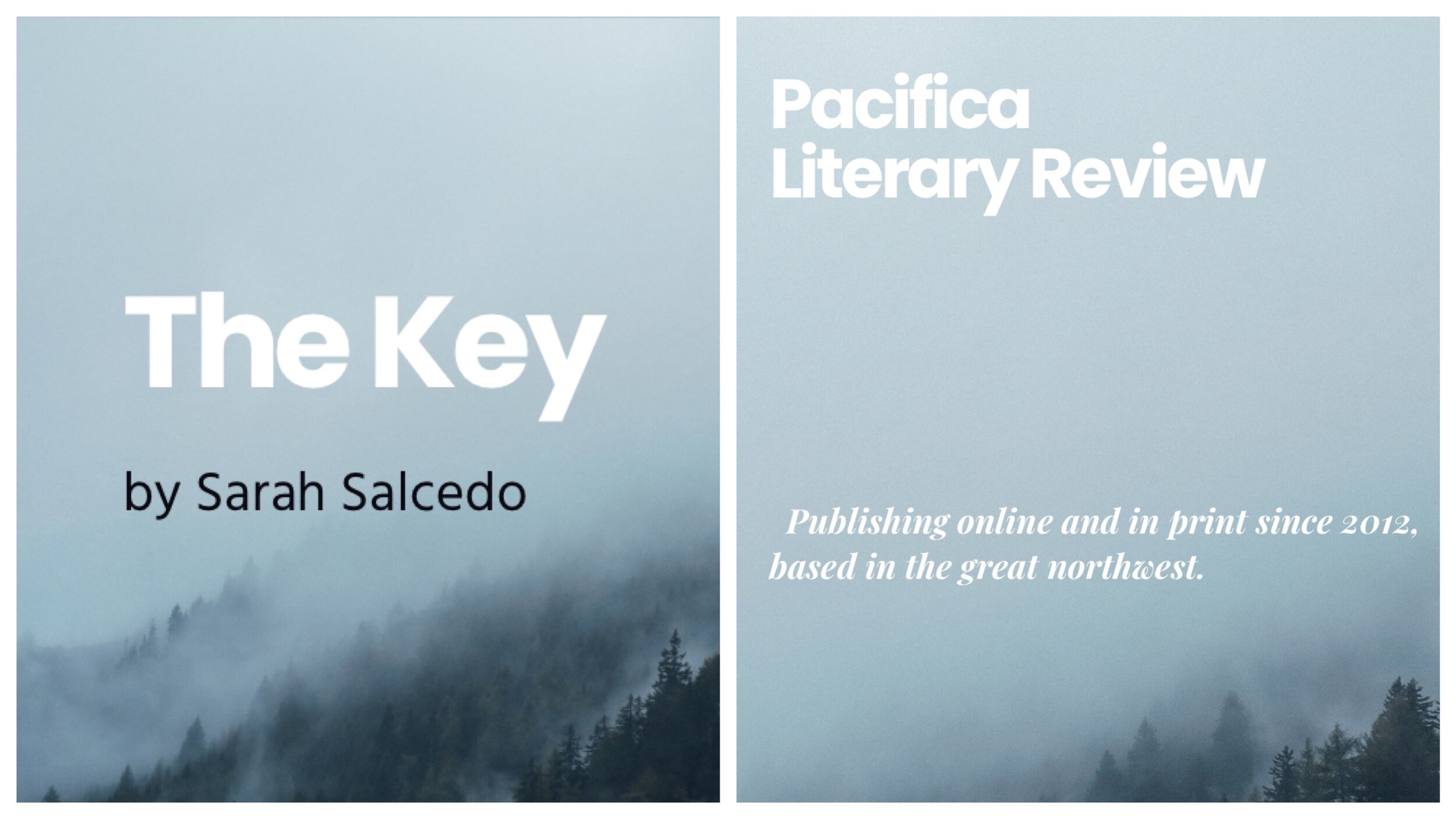Short Fiction
“Our Memories Are What We Fear Most” – Uncharted Magazine
Once upon a time, when I was mortal, I tattooed the names of my loved ones on my body. Their names were lettered in tiny script, connected by faint dotted lines—constellations to navigate the passing of time and the orientation of my heart. It had begun with my sister, Frances, on a drunken road trip down a coastal highway in California and was followed by my husband, Ted, as consolation when I returned and he asked why he hadn’t merited a spot on my arm.
When I was 39, I added the name of my daughter, Anna, and later, her sister, Nina. Before my mother passed, the practice was just a part of the trend of its larger cultural phenomenon. Thousands of humans used to inscribe the names of their loved ones on their bodies for sentimentality’s sake. That’s how it was for me until I lost my mother.
Mom—her name was Lydia—was the first name I memorialized on my own. It was a way to keep her close, etched into the body I’d inherited from her, but the tattoo also kept her present with me as my mind evolved. She died only a few decades after I’d had the Immortality Editing. I didn’t realize back then how it would change my mind, how memories of who I had loved and who I had been would slip from my mind like water through a loosely woven net. (Click to read the rest on Uncharted Magazine’s website.)
Artwork drawn by Sarah Salcedo
“Experiment Ninety-Four” – Luna Station Quarterly
The ship roared to life. Caspian was ready—to die or to escape, it was finally time to leave. Now or never. The centrifuge ring groaned into its rotation, lurching from the primary ring stasis lock. He could see the hammer strokes dappling the metal where he’d finished crafted them just a few months prior. As the ring picked up speed and began slicing through the thin atmosphere of the launch bay, artificial gravity hummed into his bones and shook his body.
He waited for the secondary ring to initiate. Fear burned in his chest. His fingers curled within his gloves to form fists, knuckles straining against the leather, haptic feedback buzzing in his palms. The ring rotations were howling. The Evolo had reached the center of the launch bay. Any moment now. He didn’t know if what he had built was good enough. (The editors of LSQ no longer host stories on their site. You can purchase the print issue here and digital copies here.)
Skull masthead for HAD drawn by EIC Aaron Burch
“The Sum of Two People” – HAD
Excerpts:
“If train A is leaving from Chicago to Cleveland at 2:30 pm MST and train B is leaving from Philadelphia to Cleveland at 2:30 pm EST, and if each train is traveling at 155 mph, with a total of 760 miles between them, how long will it take Tom, riding train A, to realize he shouldn’t have married Amber right out of high school?”
“The sum of two people is finite. One of them is twice as hurt as the other. If the other person decides to make things right, but the hurt person isn’t ready to forgive, how long can that process go on until the only answer left is subtraction?”
Illustrated by Sarah Salcedo
“Offside, Otherside” – Words & Sports Quarterly
Two teams meet in a head-on collision at the line of scrimmage. A chorus of grunts and growls grind against the crunch of crashing helmets and shoulder pads, like boots skidding to a halt in gravel. Our quarterback runs backwards, his eyes trained on Number 23 in the endzone. He throws the ball, his arm arching forward, his fingers fanning out like the feathers of a wing in flight.
The crowd screams. We’re rising to our feet, roaring to drown out the thoughts of the opposing team, everyone hoping that our cheers will motivate our players alone, our breath curling upwards in the cold November night.
My heart isn’t in the cheering. I’m gripping my father’s game ball, his disdain palpable through the pebbled leather.
(Click to read the rest of the story on W&S Quarterly’s website.)
“Stitched” – The Future Fire
Artwork for The Future Fire drawn by Sarah Salcedo
Cara walked through the woods, dagger drawn in one hand, the other hand clutching her cloak against a sharp wind that wound its way through the barren trees. Her eyes searched the dark. Bushes bucked and rolled against the wind, every silhouetted shape was a creature about to lunge at her, every branch a claw ready to rend. The tangled web of wilderness at night had always terrified Cara, long before she had to make her home in the forest. The beast hadn’t returned from the dead yet—Cara would feel it through their connection when it did.
The reverberations of the cord that stretched taut between them hummed when plucked. Just now it felt eerily quiet, but she could still feel the tension: the wolf would come for her. She tightened her grip on the cloak and kept walking, the red of the cape caught by the wind and patches of moonlight. She could not be caught off guard again. (Click to continue reading the story on The Future Fire’s site.)
“A List of Everyone in the World” – Hypertext Magazine
Artwork for Hypertext Magazine drawn by Sarah Salcedo
Therese Jones had a list of enemies. She was overlooked by everyone and no one saw her looking back at them, her tiny form swallowed by the puffy parka she wore to and from work, her eyes constantly down and her hands knotted in fists at her side. Both the coat and her hair were the pale color of a magnolia blossom slip. Her list was not the kind of list you’d see in a movie, or read about in a book, where the crossing off the names of those who had committed crimes against a tragic antihero was something you could root for, a list prayed before the main character falls asleep each night, hoping for a chance to balance the scales of injustice with violence. This was a list of tiny grievances.
Indictments such as that loud woman who cut in front of me at the grocery store and that guy who cut me off in the meeting —smells like he bathes in beef broth were written with venom into the lines for that day. Therese had never had a true enemy, but her hatred was as valid as an orphan cast out in any Dickens novel. She hated her neighbor, her neighbor’s cat, her boss, her colleagues, her mailman. She hated her parents and her sister and the old woman who worked at the local library. She felt slighted and inconvenienced by them all, as if her entire existence was on the inside of a pincushion. She woke up each morning and felt the needles, the sharp agitation of existence, and went looking for someone to blame. (Click to continue reading on Hypertext Magazine’s site.)
“The Key” – Pacifica Literary Review
She handed him her key to the front door. She wanted to ask if he was sure, if it was really better, both of them being alone? Starting over seemed impossible just then, learning to breathe again without the one arboreally absorbing the sighs and rambling words of the other.
Had this been her idea? Or was she the one being kicked out? She couldn’t remember as the dull, serrated edge of the key slid over her fingers into his palm. This had to have been his idea. His fingers closed over the key. His torn nails, swollen-knuckled fist, a tan line where the ring had been, pulled away with her key, her last permission to be a part of her old life, embedded into his hand. (Click to continue reading on Pacifica Literary Review’s site.)







